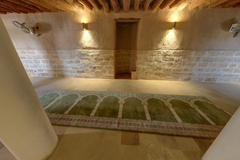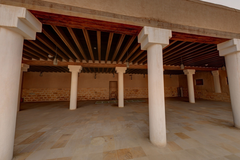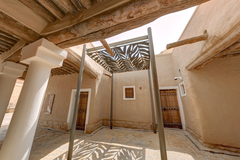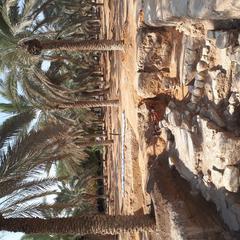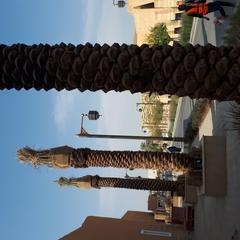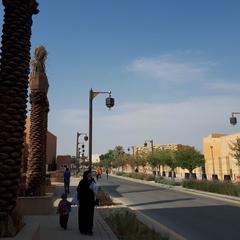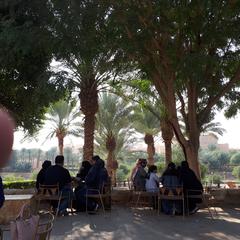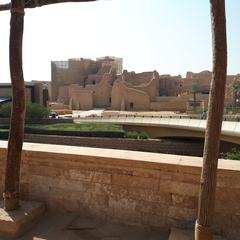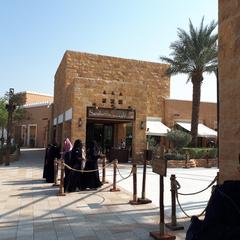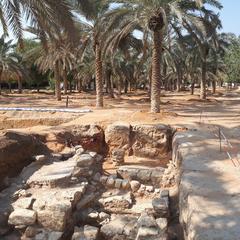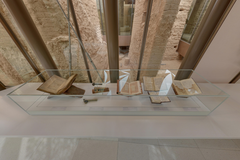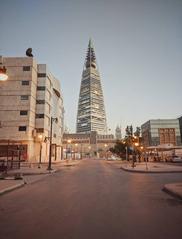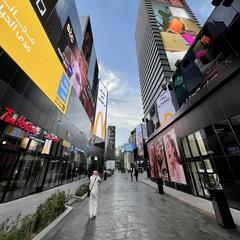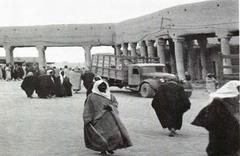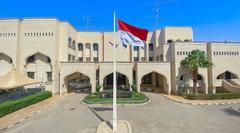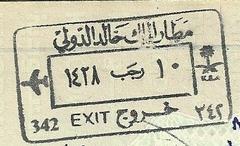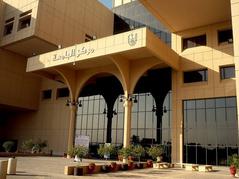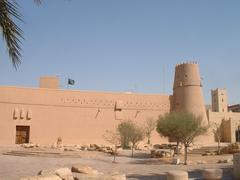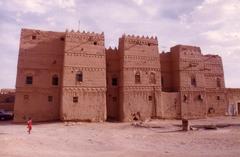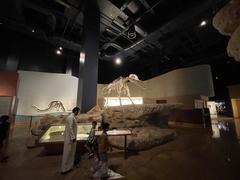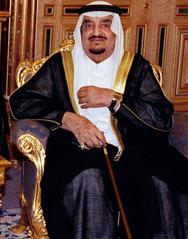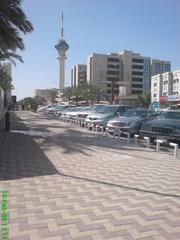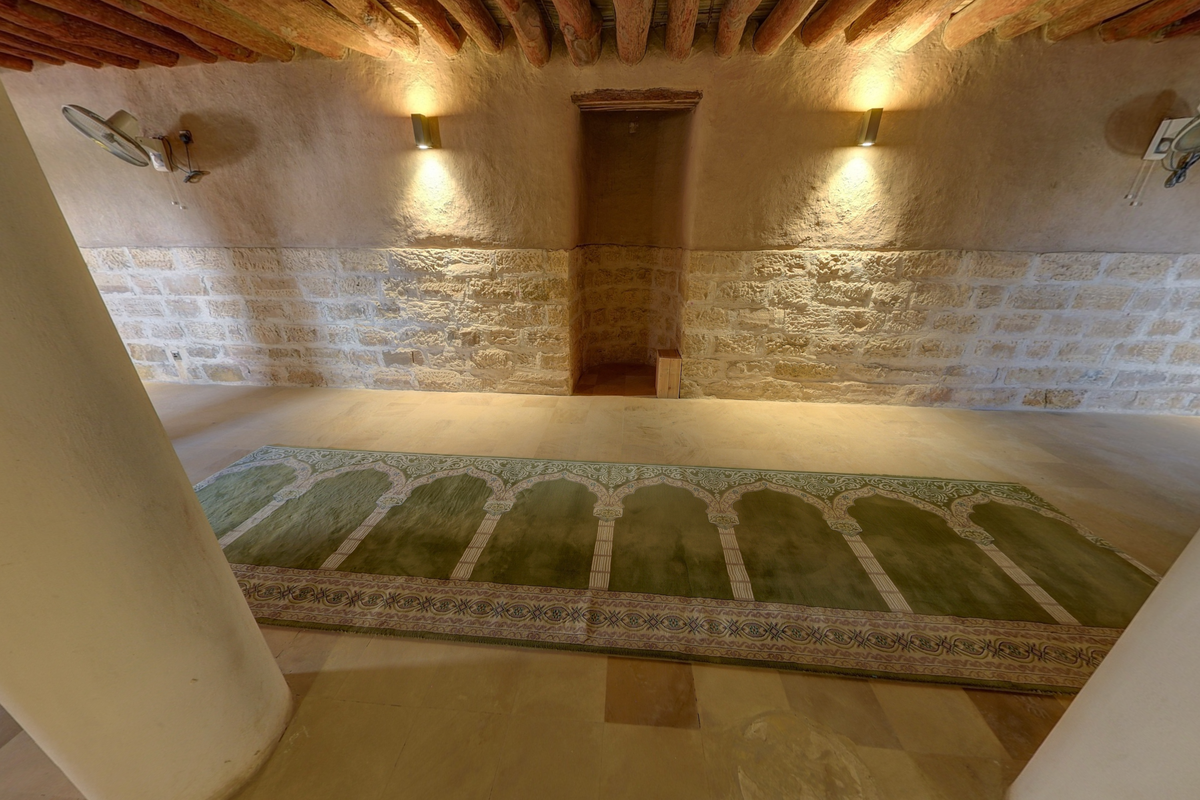
Visiting Haneefa Valley: Hours, Tickets, and Nearby Attractions
Publication Date: 19/07/2024
Introduction
Haneefa Valley, also known as Wadi Hanifa, stands as a remarkable historical and ecological treasure in Riyadh, Saudi Arabia. Its significance is multifaceted, encompassing a rich historical heritage, diverse ecological systems, and cultural vibrancy. The valley’s history stretches back to the Neolithic period, making it one of the earliest known agricultural hubs in the Arabian Peninsula (Saudi Commission for Tourism and National Heritage). Over the centuries, it has witnessed the ebb and flow of various civilizations, including the Banu Hanifa tribe during the pre-Islamic era, and later, it played a pivotal role in the spread of Islam and the rise of the Al Saud dynasty. Today, Haneefa Valley is not only a testament to the past but also a thriving center for tourism, culture, and environmental conservation. From its ancient settlements and rock art to its modern parks and cultural centers, the valley offers a unique blend of natural beauty and historical richness. This guide aims to provide comprehensive information for visitors, including historical insights, practical tips, and details about nearby attractions, ensuring that your visit to Haneefa Valley is both informative and enjoyable.
Table of Contents
- Introduction
- Historical Background of Haneefa Valley, Riyadh, Saudi Arabia
- Key Historical Sites
- Visitor Information
- Nearby Attractions
- Accessibility
- Frequently Asked Questions (FAQ)
- Conclusion
Historical Background of Haneefa Valley, Riyadh, Saudi Arabia
Ancient Origins
Haneefa Valley has a rich history that dates back thousands of years. The valley has been a crucial part of the Arabian Peninsula’s history due to its fertile lands and abundant water resources. Archaeological evidence suggests that human settlements in the valley date back to the Neolithic period, around 8,000 years ago. These early inhabitants utilized the valley’s resources for agriculture and sustenance, making it one of the earliest known agricultural hubs in the region.
Pre-Islamic Era
During the pre-Islamic era, Haneefa Valley was inhabited by various tribes, including the Banu Hanifa tribe, from which the valley derives its name. The Banu Hanifa were part of the larger Arab tribal confederation known as the Banu Bakr. The valley served as a strategic location for trade and commerce due to its proximity to major trade routes that connected the Arabian Peninsula with the Levant and Mesopotamia. The presence of ancient inscriptions and rock art in the valley provides insights into the cultural and social life of its early inhabitants (Saudi Commission for Tourism and National Heritage).
Islamic Period
With the advent of Islam in the 7th century, Haneefa Valley became an important region for the spread of the new religion. The Banu Hanifa tribe initially resisted the teachings of Prophet Muhammad but eventually embraced Islam. The valley’s strategic location continued to play a significant role during the early Islamic conquests, serving as a base for military campaigns and a center for Islamic learning and scholarship.
Ottoman Era
During the Ottoman period, which began in the 16th century, Haneefa Valley was incorporated into the Ottoman Empire. The Ottomans recognized the valley’s agricultural potential and invested in the development of irrigation systems to enhance agricultural productivity. The valley’s fertile lands produced a variety of crops, including dates, wheat, and barley, which were essential for the local economy. The Ottomans also established administrative centers in the valley to govern the region effectively (Ottoman Archives).
Modern Era and Saudi Unification
The modern history of Haneefa Valley is closely tied to the unification of Saudi Arabia in the early 20th century. The valley played a pivotal role in the rise of the Al Saud family, who established the Kingdom of Saudi Arabia in 1932. King Abdulaziz Al Saud, the founder of modern Saudi Arabia, utilized the valley as a strategic base during his campaigns to unify the Arabian Peninsula. The valley’s agricultural resources and strategic location were instrumental in supporting the nascent Saudi state.
Development and Urbanization
In the latter half of the 20th century, Haneefa Valley underwent significant development and urbanization. The Saudi government recognized the valley’s historical and cultural significance and initiated various projects to preserve its heritage while promoting sustainable development. The valley’s natural beauty and historical sites attracted both domestic and international tourists, leading to the establishment of parks, museums, and cultural centers.
Environmental Conservation Efforts
In recent years, there has been a growing emphasis on environmental conservation in Haneefa Valley. The Saudi government, in collaboration with international organizations, has implemented initiatives to restore the valley’s natural ecosystem and protect its biodiversity. Efforts have been made to clean and rehabilitate the valley’s watercourses, reintroduce native plant species, and promote sustainable agricultural practices. These conservation efforts aim to preserve the valley’s historical and ecological heritage for future generations (UNESCO).
Cultural Significance
Haneefa Valley holds immense cultural significance for the people of Saudi Arabia. It is not only a testament to the region’s rich history but also a symbol of resilience and adaptation. The valley’s historical sites, including ancient settlements, rock art, and Islamic monuments, provide valuable insights into the cultural and social evolution of the Arabian Peninsula. The valley continues to be a source of inspiration for artists, writers, and scholars who draw upon its rich heritage in their works.
Key Historical Sites
Diriyah
Located on the outskirts of Haneefa Valley, Diriyah is a UNESCO World Heritage site and the birthplace of the Saudi state. It was the original home of the Al Saud family and served as the capital of the first Saudi state in the 18th century. The historic district of Al-Turaif in Diriyah features mud-brick palaces, mosques, and defensive walls that reflect the architectural style of the period (UNESCO).
Al-Masmak Fortress
Situated in the heart of Riyadh, near Haneefa Valley, Al-Masmak Fortress is a symbol of Saudi Arabia’s unification. The fortress was captured by King Abdulaziz in 1902, marking the beginning of his campaign to unify the Arabian Peninsula. Today, the fortress houses a museum that showcases artifacts and exhibits related to Saudi history and culture (Saudi Tourism).
Rock Art of Hail Region
While not located directly within Haneefa Valley, the rock art sites in the nearby Hail region provide valuable context for understanding the prehistoric cultures that once inhabited the valley. These rock carvings depict scenes of hunting, daily life, and religious rituals, offering a glimpse into the lives of ancient Arabian societies (UNESCO).
Visitor Information
Visiting Hours and Tickets
Haneefa Valley is accessible to visitors year-round. The best time to visit is during the cooler months from October to March. The visiting hours are typically from 8 AM to 6 PM daily. Admission is free, but some historical sites within the valley may charge a nominal entrance fee.
Travel Tips
- Best Time to Visit: Plan your visit during the cooler months to avoid the extreme heat of the summer.
- Dress Code: Respect the local customs by dressing modestly. Lightweight, loose-fitting clothing is recommended.
- Guided Tours: Consider booking a guided tour to gain deeper insights into the valley’s history and significance.
- Facilities: Make use of the available amenities such as restrooms, picnic areas, and visitor centers.
- Safety: Stay hydrated and wear sunscreen, especially if you plan to explore the valley extensively.
Nearby Attractions
Kingdom Centre Tower
A prominent skyscraper in Riyadh offering panoramic views of the city from its Sky Bridge.
National Museum of Saudi Arabia
Located in Riyadh, this museum provides a comprehensive overview of the country’s history and culture.
Riyadh Zoo
A family-friendly attraction featuring a variety of animal species and lush gardens.
Accessibility
Haneefa Valley is accessible by car, and ample parking is available at various points of interest. Public transportation options are limited, so renting a car or hiring a taxi is recommended. The valley is also wheelchair accessible, with designated pathways and facilities for visitors with mobility challenges.
Frequently Asked Questions (FAQ)
Q: What are the visiting hours for Haneefa Valley?
A: The visiting hours are from 8 AM to 6 PM daily.
Q: How much are tickets to Haneefa Valley?
A: Admission to the valley is free, but some historical sites may charge a nominal entrance fee.
Q: What is the best time to visit Haneefa Valley?
A: The best time to visit is during the cooler months from October to March.
Q: Are guided tours available in Haneefa Valley?
A: Yes, guided tours are available and are recommended for a more informative experience.
Conclusion
Haneefa Valley’s historical background is a tapestry of ancient civilizations, Islamic heritage, and modern development. Its significance as a cultural and historical landmark continues to attract visitors from around the world, offering a unique blend of natural beauty and historical richness. The valley’s preservation and conservation efforts ensure that its legacy will endure for generations to come. Plan your visit to Haneefa Valley today and immerse yourself in the rich history and culture of Riyadh.
Call to Action
Download the Audiala mobile app for more travel tips and updates on historical sites in Saudi Arabia. Follow us on social media for the latest news and insights on Haneefa Valley and other attractions in Riyadh.
References
- Saudi Commission for Tourism and National Heritage (https://scth.gov.sa)
- Ottoman Archives (https://www.devletarsivleri.gov.tr)
- UNESCO (https://whc.unesco.org)
- Saudi Tourism (https://www.visitsaudi.com)
- Arriyadh Development Authority (https://www.ada.gov.sa)
- Saudi Ministry of Culture (https://www.moc.gov.sa)
- Saudi Tourism Authority (https://www.visitsaudi.com)
- Riyadh Municipality (https://www.alriyadh.gov.sa)
- King Saud University (https://www.ksu.edu.sa)
- Saudi Vision 2030 (https://vision2030.gov.sa)
